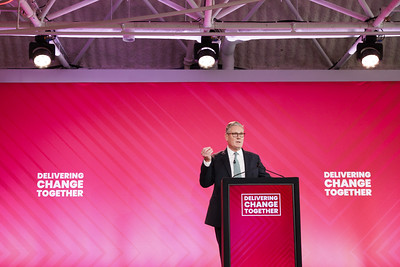The long-awaited Civil Society Covenant was published on 17 July 2025. The Covenant sets out a new vision for how government and civil society should work together. In this blog, CFG's Policy Officer Ida Karlsson explain what it says, what it could mean in practice, how CFG views the commitments, and—crucially—what needs to happen next to ensure implementation lives up to the ambition.

The Civil Society Covenant was co-designed by government and civil society and aims to improve collaboration, strengthen partnerships, and build a more effective, balanced relationship between the two sectors. In its own words, it seeks to establish “a new model of partnership” between government and civil society—one rooted in mutual respect, clear expectations, and shared responsibility.
The Covenant is structured around four core principles:
- Recognition and Value
Government should recognise the role and contribution of civil society, respect its independence, and enable organisations to share expertise and hold decision-makers to account without adverse consequences.
2. Partnership and Collaboration
Engagement should take place earlier and more consistently, with a focus on shared goals, long-term planning, and funding that supports and allows for preventative, not just reactive, action.
3. Participation and Inclusion
This refers to ensuring broad, representative participation. It recognises the need to engage citizens in meaningful, democratic ways, especially those whose voices are often missing.
4. Transparency and Data
The Covenant calls for better information-sharing, improved communication, and greater data accessibility – both ways. It also points to the need for increased transparency around how civil society funding is handled.
That, in brief, is the core content of the Covenant. There's more to read here – including case studies and statements from organisations involved in the co-design process.
The Government has also published an Illustration Document setting out signs of progress and potential warning indicators under each principle, providing a useful reference point for assessing implementation over time.
As advocates for our members, we welcome the publication of the Civil Society Covenant. While we naturally would have liked to see some of the commitments go further, it is a strong and thoughtful foundation. The structure is clear, the ambition is credible and, importantly, the Covenant includes practical mechanisms to support delivery and accountability.
As ACEVO put it, at the very least, the ‘Covenant is a starting point’. We were pleased to hear PM Starmer’s warm words about giving civil society “a home at the heart of government” – and we’ll be looking for that to translate into action.
Our main concern now is the next steps. Specifically, how we can ensure the Covenant actually gets implemented and reviewed – and, ideally, has some bite. Thankfully, this is something the Covenant does mention. So, here it is:
The establishment of the Joint Civil Society Covenant Council
This Council is expected to take the lead in delivering the principles of the Covenant, setting direction and providing strategic oversight. It will be made up of civil society leaders and senior government representatives, creating a forum to drive real progress in the relationship reset.
The details – such as how exactly it will be set up and who will sit on it – are still to be determined.
The introduction of a range of Task and Finish Groups focusing on specific policy issues impacting the relationship between civil society and government
Another central group for its implementation is the Task and Finish group which will be managed by the Joint Council. Two groups will initially be established:
- The Local Implementation Task and Finish Group will focus on how the Covenant plays out at a local level.
- The Commissioning Task and Finish Group will, according to Government guidance, aim to “open up possibilities for more collaborative, impactful commissioning relationships”.
Again, the practical details are yet to emerge – but we’re glad to see these practical structures being proposed to bring the Covenant to life.
Specific actions government departments will take to implement the Civil Society Covenant and support partnership working with civil society
DCMS will be launching a ‘Local Covenant Partnerships’ programme to help civil society work more collaboratively with local authorities and public services. This will apply in England and is aimed at areas most in need of support.
The Grants and Commercial Function in the Cabinet Office have reviewed policies and guidance related to their model grant and service contract templates, to ensure that they are clear, and consistent with the principles of the Covenant. The aim is to update the guidance and templates as soon as possible.
HMT is also emphasising their commitment to working in partnership with civil society and has said it will establish a new civil society forum – something we strongly welcome. We hope this leads to deeper engagement and increased dialogue between civil society representatives, Ministers, and senior officials.
All in all, it’s a strong start – and a lot of warm words that we hope will turn into meaningful action. We’re excited to see how the Covenant will lead to real change for the sector – and for society more broadly.
You can read a comment on the Covenant from Caron Bradshaw, CEO of CFG, here.